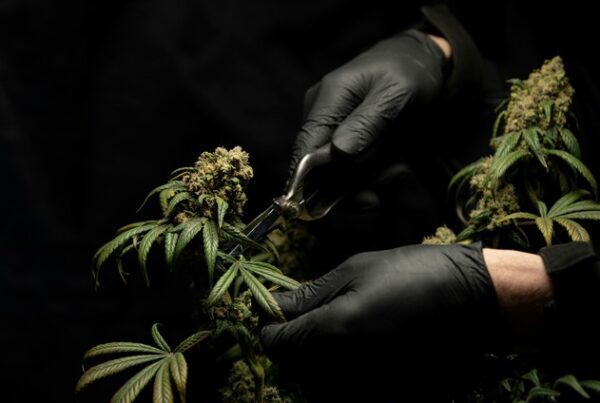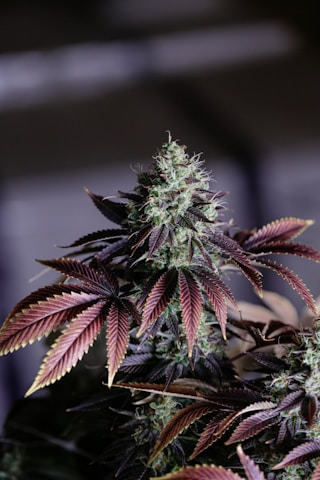
Cultivating Cannabis with Feminized Seeds.
Cultivating cannabis with feminized seeds is a practice that many growers are turning to in order to maximize their yield. By utilizing feminized seeds, cultivators can ensure that their plants are all female, eliminating the need to identify and remove male plants. This not only saves time and effort but also allows for a more efficient use of space and resources. In this guide, we will explore various tips and techniques that can help growers increase their yield when using feminized seeds. From proper lighting and nutrient management to pest control and harvesting methods, we will cover all aspects of cultivating cannabis with feminized seeds. Whether you are a novice grower looking to improve your skills or an experienced cultivator aiming to boost your production, this guide will provide you with valuable insights and strategies to achieve the best results. Get ready to take your cannabis cultivation to the next level with these expert tips!.
Understanding Feminized Seeds
Feminized seeds have revolutionized the cannabis cultivation industry by offering a guarantee that the plants will be female. This is achieved through a process of forcing female plants to produce pollen, which is then used to fertilize another female plant. This results in seeds that are almost guaranteed to be female, eliminating the need to sex plants and reducing the chances of accidental pollination.
Advantages of Using Feminized Seeds in Cannabis Cultivation
- Increased Yield Potential: Since only female plants produce buds, using feminized seeds ensures a higher yield per plant.
- Space Efficiency: With feminized seeds, growers can maximize their space by eliminating the need to grow extra plants for breeding purposes.
- Time-Saving: By removing the need to sex plants, growers can save time and resources by focusing on cultivating plants that are guaranteed to produce buds.
- Cost-Effective: While feminized seeds may be slightly more expensive upfront, the potential increase in yield and efficiency can result in cost savings in the long run.
- Consistency: Feminized seeds offer consistency in terms of plant characteristics, making it easier for growers to predict growth patterns and plan their cultivation process effectively.
Additional Benefits of Using Feminized Seeds
- Pest and Disease Resistance: Feminized seeds are often bred to be more resilient to pests and diseases, reducing the need for chemical interventions and promoting a healthier crop.
- Quality Control: With feminized seeds, growers have better control over the quality of their crop since they can select specific strains known for their desirable traits.
- Environmental Impact: By using feminized seeds, growers can reduce the environmental impact of their cultivation practices by minimizing the resources needed for plant maintenance and reducing waste.
- Breeding Programs: Feminized seeds are essential for breeding programs focused on developing new strains with specific characteristics, allowing breeders to create unique and potent varieties.
Understanding feminized seeds and their advantages can significantly benefit cannabis cultivators looking to streamline their operations and maximize their yields. By incorporating feminized seeds into their cultivation practices, growers can experience improved efficiency, higher yields, and greater control over the quality of their crops, ultimately leading to a more sustainable and successful cannabis cultivation venture.
Factors Influencing Yield in Cannabis Cultivation
Cannabis cultivation, particularly with fast flowering weed seeds, requires a strategic approach to optimize yield. Several factors play a crucial role in ensuring a successful harvest. By focusing on providing optimal lighting, nutrient balance, environmental conditions, and cultivation techniques, cultivators can enhance yield potential and overall plant health.
Lighting
Lighting is a fundamental factor influencing cannabis growth and yield. Mimicking natural light cycles through the use of high-quality grow lights can promote photosynthesis and encourage robust plant development. By ensuring the right intensity and duration of light exposure, cultivators can support healthy flowering and maximize bud production. Additionally, utilizing light spectrum variations during different growth stages can further enhance plant growth and cannabinoid production.
Nutrient Balance
Nutrient balance is another critical consideration in cannabis cultivation. Tailoring feeding schedules to match the plant’s growth stages and using quality fertilizers can provide essential nutrients for vigorous growth. Beyond macronutrients and micronutrients, micronutrients like calcium, magnesium, and iron are vital for various metabolic processes in cannabis plants. Implementing organic nutrient sources can also improve soil health and microbial activity, contributing to overall plant vitality.
Temperature and Humidity
temperature and humidity levels play a significant role in creating an optimal growing environment for cannabis plants. Maintaining consistent temperatures and humidity levels within the ideal range can support healthy plant metabolism and reduce the risk of stress-related issues. Advanced climate control systems, such as automated environmental monitoring and control, can help growers maintain precise conditions throughout the cultivation cycle, ensuring optimal plant growth and resin production.
Pruning and Training Techniques
Effective pruning and training techniques are essential for maximizing yield potential in cannabis cultivation. By removing excess foliage, promoting better light penetration, and shaping plant growth through techniques like topping or low-stress training, cultivators can encourage the development of larger, denser buds. Moreover, employing techniques such as defoliation and lollipopping can redirect plant energy towards bud production, ultimately increasing yields.
Optimizing yield in cannabis cultivation requires a holistic approach that considers various factors influencing plant growth and development. By focusing on providing optimal lighting, nutrient balance, environmental conditions, and cultivation techniques, cultivators can enhance yield potential and achieve successful harvests. Continuous experimentation and adaptation to the specific needs of each cannabis strain can further refine cultivation practices and lead to improved yields over time.
Tips for Maximizing Yield with Feminized Seeds
One advanced technique that growers can use to further enhance the yield when working with feminized seeds is the application of stress training methods such as topping, super cropping, or LST (Low-Stress Training). These techniques help promote lateral growth, increase light exposure to lower bud sites, and ultimately maximize the yield potential of each plant. By strategically manipulating the plant’s growth patterns through stress training, growers can encourage the development of multiple colas, leading to a more bountiful harvest.
In addition to stress training, another crucial factor in maximizing yield with feminized seeds is the implementation of a tailored nutrient feeding schedule. Feminized plants have specific nutritional requirements that differ from regular seeds, and providing them with the right balance of nutrients at each growth stage is essential for achieving optimal results. During the vegetative stage, nitrogen-rich fertilizers can support healthy leaf and stem growth, while phosphorus and potassium become more critical during the flowering stage to promote robust bud development.
Furthermore, maintaining proper environmental conditions such as temperature, humidity, and airflow is paramount when aiming to maximize yield with feminized seeds. Consistent monitoring of these factors can help prevent stress-related issues and ensure that the plants are thriving throughout their life cycle. Adequate ventilation is particularly crucial to prevent mold and mildew, which can significantly impact yield and quality.
Another tip for growers looking to boost yield is to consider using supplemental lighting, especially during the flowering stage. Providing additional light sources such as LED grow lights can help increase bud density and overall yield. Moreover, optimizing the light schedule to mimic natural sunlight cycles can further enhance plant growth and productivity.
Maximizing yield with feminized seeds requires a combination of advanced techniques, tailored nutrient management, meticulous environmental control, and strategic pest and disease prevention. Growers should also pay attention to the pH levels of the soil or growing medium, as feminized plants are sensitive to pH fluctuations that can affect nutrient uptake and overall health. Additionally, incorporating beneficial microbes into the soil can improve nutrient absorption and enhance plant resilience.
To further optimize yield, growers can explore techniques like defoliation during the flowering stage to redirect energy to bud production, as well as using organic fertilizers to promote soil health and microbial activity. Regular pruning and training methods can help maintain an open canopy for better light penetration and airflow, ultimately leading to healthier and more productive plants.
Lastly, staying informed about the latest advancements in cannabis cultivation, attending workshops or seminars, and networking with other experienced growers can provide valuable insights and tips for maximizing yield with feminized seeds. By continuously learning and adapting best practices, growers can refine their techniques and achieve consistent high yields with their feminized crops.
Harvesting and Post-Harvest Care of Cannabis Plants
Harvesting cannabis plants at the right time is crucial for achieving the desired potency and yield. One advanced technique involves closely monitoring the trichomes on the buds. Trichomes are tiny, crystal-like structures on the surface of the buds that contain the cannabinoids responsible for the plant’s potency. By using a magnifying glass or a jeweler’s loupe, growers can observe the trichomes and look for changes in color and clarity. For maximum potency, it is recommended to harvest when the trichomes are mostly milky white with some amber tones. This stage indicates the peak levels of THC and other cannabinoids. However, if the goal is a more relaxing effect, waiting for more amber tones may be preferred. Apart from trichome observation, monitoring the plant’s overall health, nutrient levels, and environmental conditions is essential. Factors like humidity, temperature, and light exposure can significantly impact the plant’s development. By paying attention to these details, growers can determine the best time for harvest to achieve both potency and yield.
Post-Harvest Care
Post-harvest care is equally important to preserve the quality of the cannabis buds. After harvesting, the buds need to be properly dried and cured to enhance their flavor, potency, and overall smoking experience. Drying the buds slowly in a dark, well-ventilated room helps to prevent mold growth and preserve the cannabinoids and terpenes. Once the buds are dry, they should be cured in airtight containers, allowing them to develop their full aroma and smoothness over time.
In addition to drying and curing, proper storage is key to maintaining the quality of harvested cannabis. Storing the buds in a cool, dark place in glass jars with humidity packs can help to prevent degradation and maintain potency. It is essential to check the buds regularly for any signs of mold or moisture and to ensure they are not exposed to excessive light or heat.
Furthermore, post-harvest testing can provide valuable insights into the quality and potency of the harvested cannabis. Testing for cannabinoid levels, terpene profiles, and potential contaminants can help growers understand the characteristics of their product and make informed decisions for future harvests.
By following these harvesting and post-harvest tips, cannabis growers can ensure that they achieve the best possible potency, flavor, and overall quality in their final product.
Conclusion
Utilizing feminized seeds is a valuable strategy for cannabis cultivation to ensure a higher yield. By incorporating the tips mentioned in this blog, such as proper lighting, nutrient management, and environmental control, growers can optimize their harvests and produce high-quality cannabis. Investing in feminized seeds and following best practices can lead to a successful and rewarding cultivation experience.










